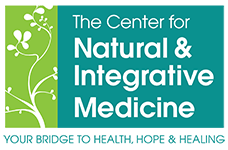In the most recent blog from the Center For Natural and Integrative Medicine, we warned you about lifestyle choices that could be affecting your risks for breast cancer. In this blog we present you with some risks which exist in our modern environment. Some of these risks are very difficult to avoid; others can be avoided because of your awareness of them. Where you live and how you shop can raise or lower your risks. We do want to clarify one point: “Seventy percent of people with b reast cancer have none of the known risk factors.” So, just because you have been exposed to some of the risk factors, does not mean you will be diagnosed with breast cancer.
reast cancer have none of the known risk factors.” So, just because you have been exposed to some of the risk factors, does not mean you will be diagnosed with breast cancer.
One wild statistic which might shock you is that there are 85,000 synthetic chemicals on the market today. Some examples include:
Deadly Beauty: Some preservatives in the prettiest lipstick, many cosmetics and personal grooming products.
Hot Stuff: Flame retardants in our furniture,
Portable H2O: Plastic in our rehydrating water bottles,
Bug Phobia: Pesticides on fresh fruits and vegetables.
There is a startling statistical proof that the more Americans use chemicals, the higher the incidences of both breast cancer, and other cancers. It is a proven fact that non-industrialized “countries have lower breast cancer rates than industrialized countries.” We also know that people who move away from less industrialized areas, into the urban life of industrialized countries “develop the same breast cancer rates as those of the industrialized country.”
One Sure Thing
We have established several studies that prove Estrogen is a hormone closely linked with breast cancer. Here is the crux of the matter: Numerous synthetic chemicals in our modern life, perform as if they are like estrogen, once they enter our bodies. We call these disguised hormones “xeno-estrogens.” The list of products includes many everyday items:
Lawn Care: Weed killers and pesticides, (such as DDE and PCBs (polychlorinated biphenyls ),
Disposables: plastic additives or by-products,
Color: Spray paints and paint removers.
PVCs: An especially insidious chemical, Polyvinyl chloride (PVC), is used in wrapping and packaging foods and medicines. Likewise, it is infused in appliances, cars, toys, credit cards, and that favorite slicker you wear in the rain.
One positive note about these risky environmental factors is that we are becoming more aware of them. We are studying ways to become green, and avoid artificial and synthetic products we used to think were safe and sane.
As proven by our lists above, what we eat and drink and absorb into our skin can become risks for breast cancer.
Scientists have recently proven that we also inhale a risk if we live or work near roads and highways filled with traffic.  In fact, some studies put the risk factor of living in neighborhoods near traffic at twice as much as it is for women who live further away from the larger roads. Three years ago, the President’s Cancer Panel declared, “The Panel was particularly concerned to find that the true burden of environmentally induced cancer has been grossly underestimated [and] … the American people—even before they are born—are bombarded continually with myriad combinations of these dangerous exposures.”
In fact, some studies put the risk factor of living in neighborhoods near traffic at twice as much as it is for women who live further away from the larger roads. Three years ago, the President’s Cancer Panel declared, “The Panel was particularly concerned to find that the true burden of environmentally induced cancer has been grossly underestimated [and] … the American people—even before they are born—are bombarded continually with myriad combinations of these dangerous exposures.”
 At this time, knowledge of these breast cancer risks is our best weapon, until Americans enforce priority legislation that will regulate the usage of some of these chemicals now known to increase breast cancer risks.
At this time, knowledge of these breast cancer risks is our best weapon, until Americans enforce priority legislation that will regulate the usage of some of these chemicals now known to increase breast cancer risks.
Thank you for visiting our blog, and we hope you will help us spread the word about the environmental breast cancer risks in our environment. We also hope you’ll keep wearing those pink ribbons!

